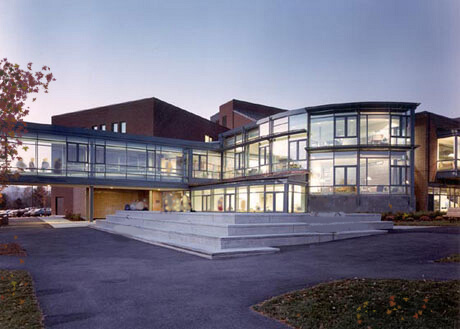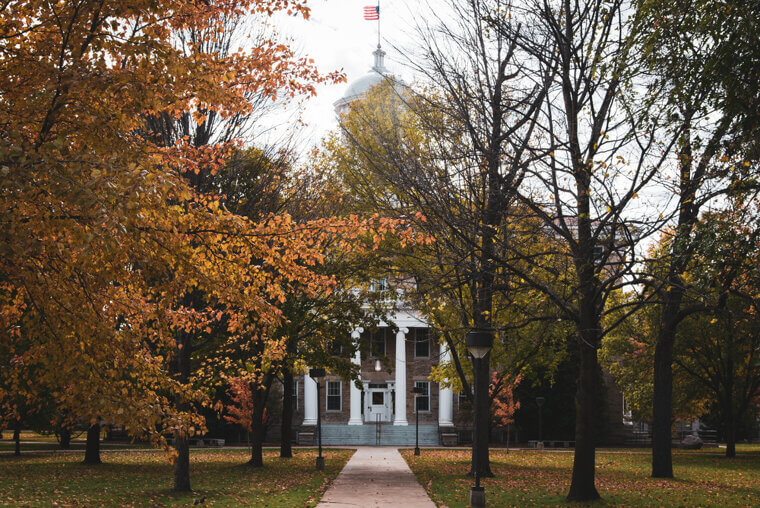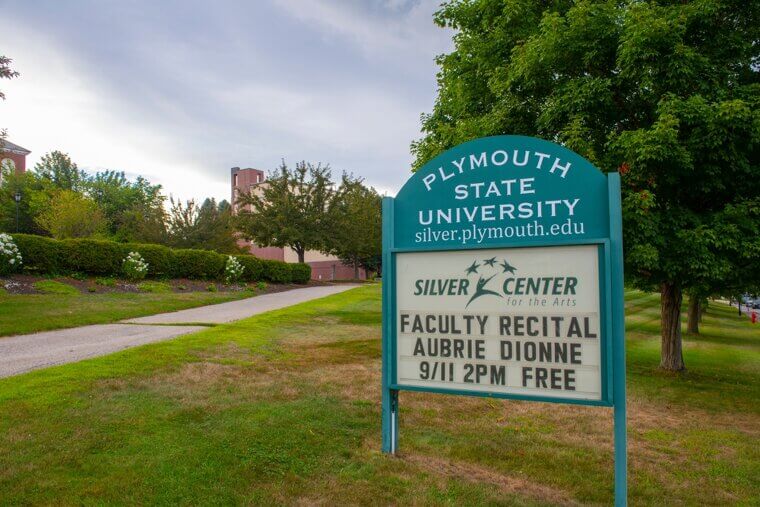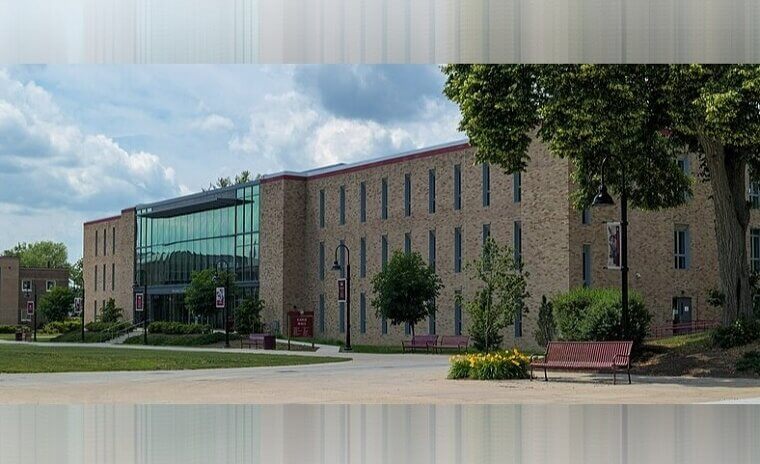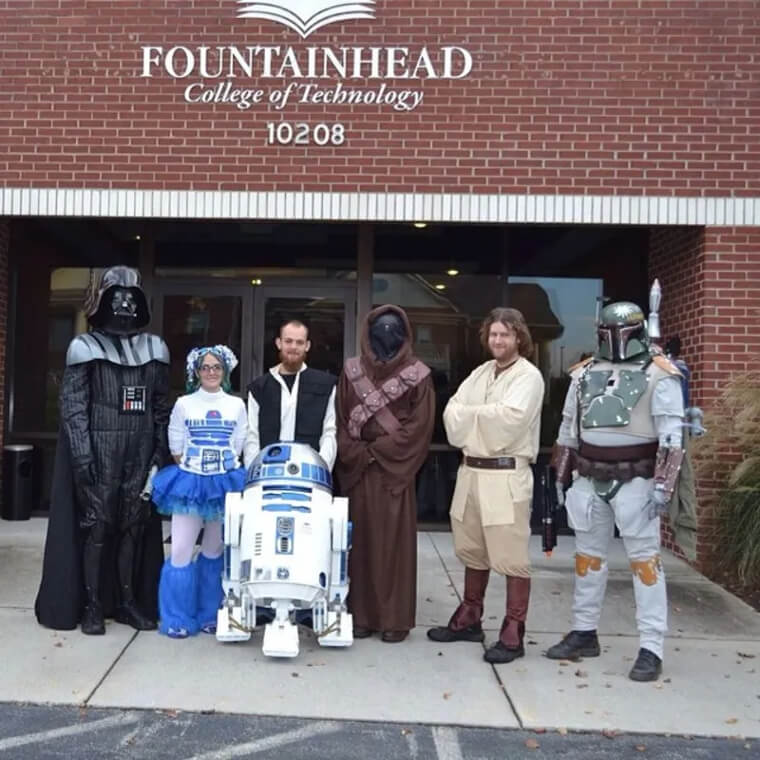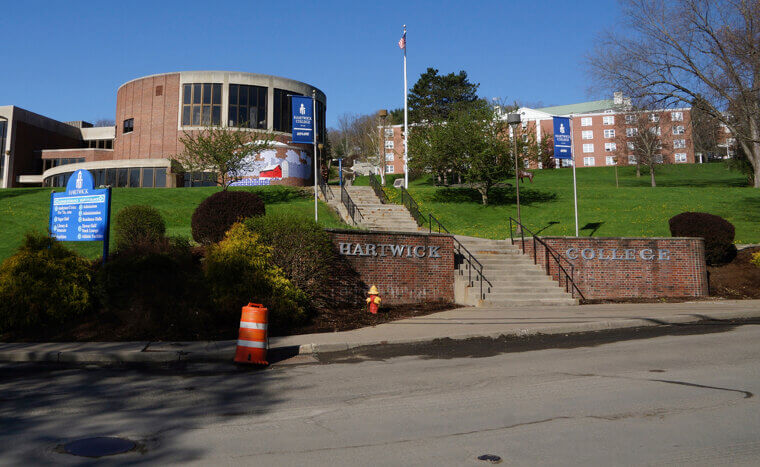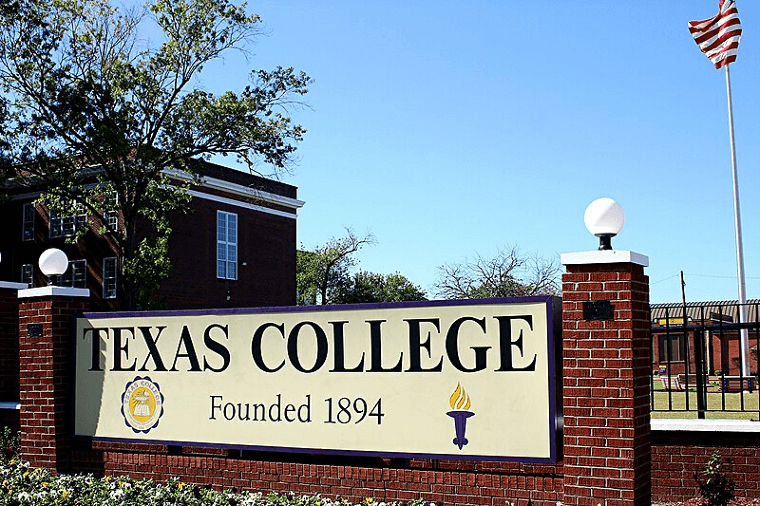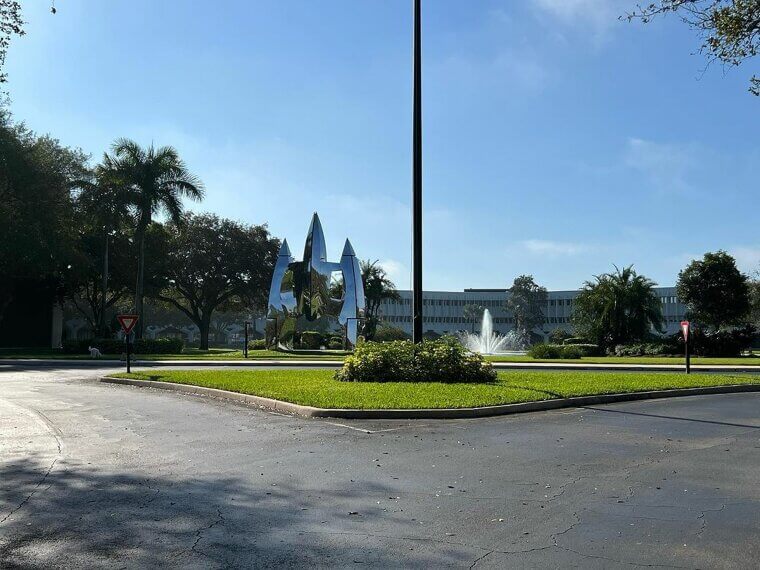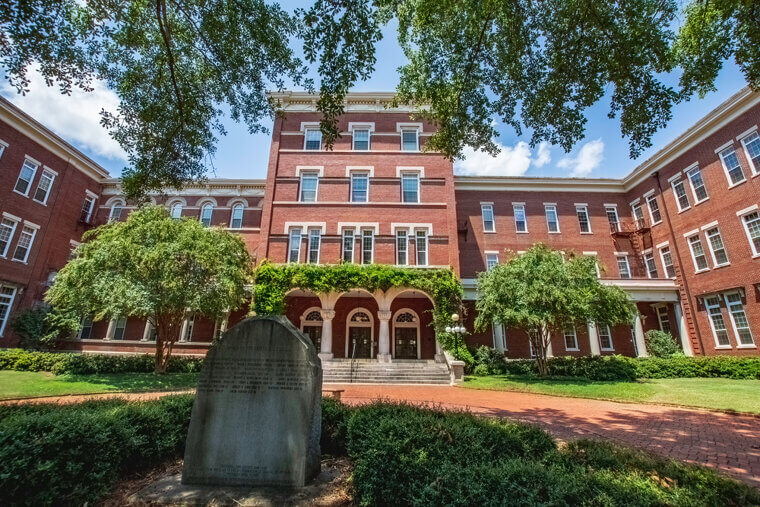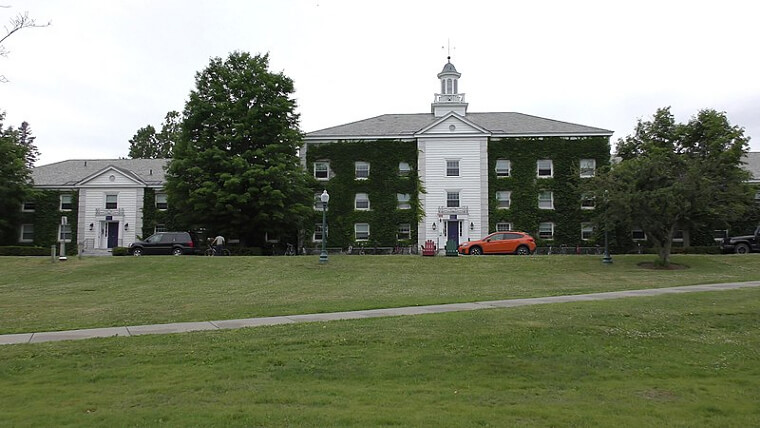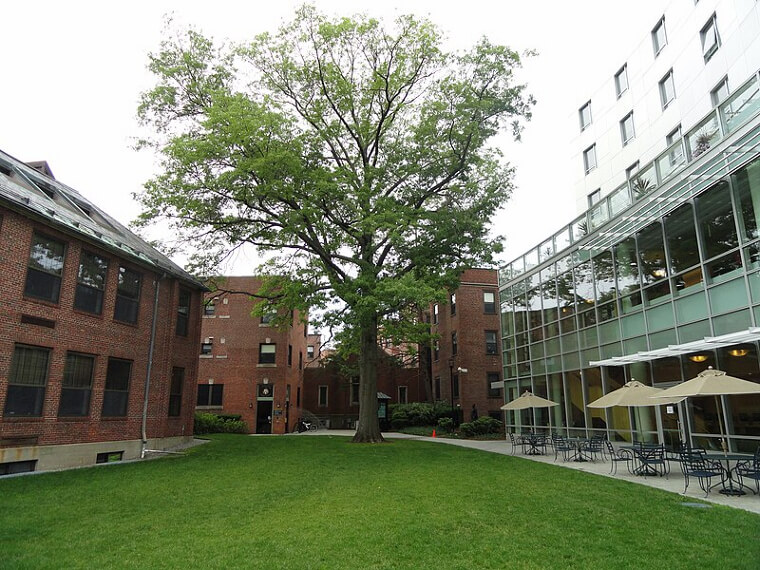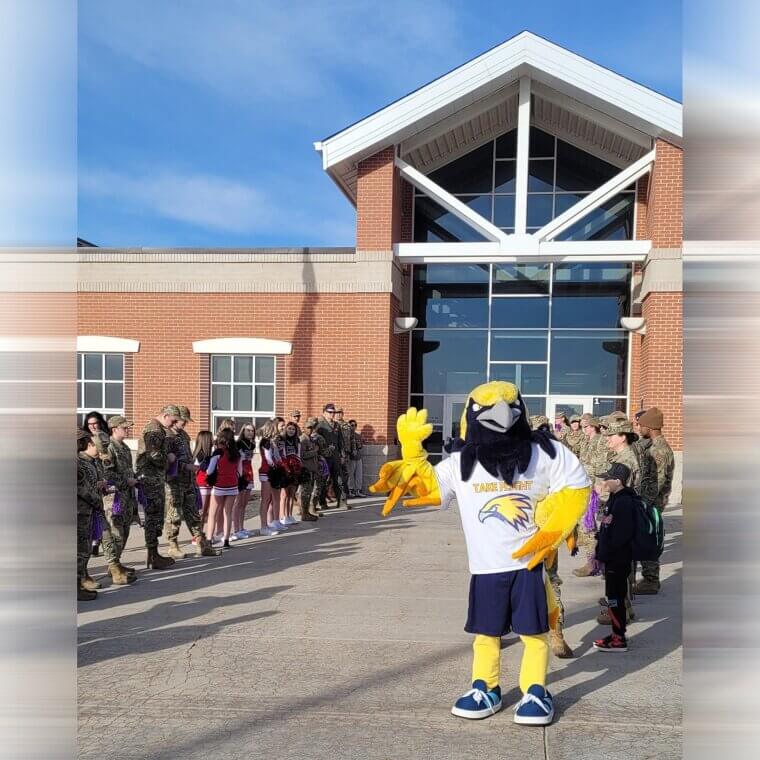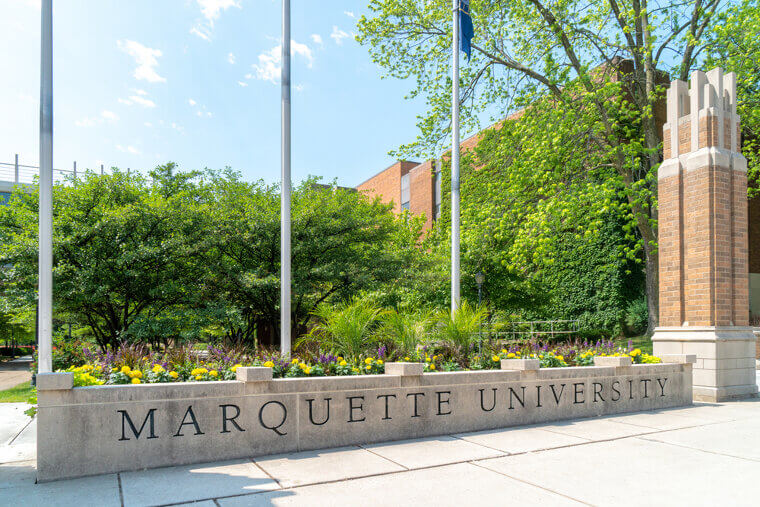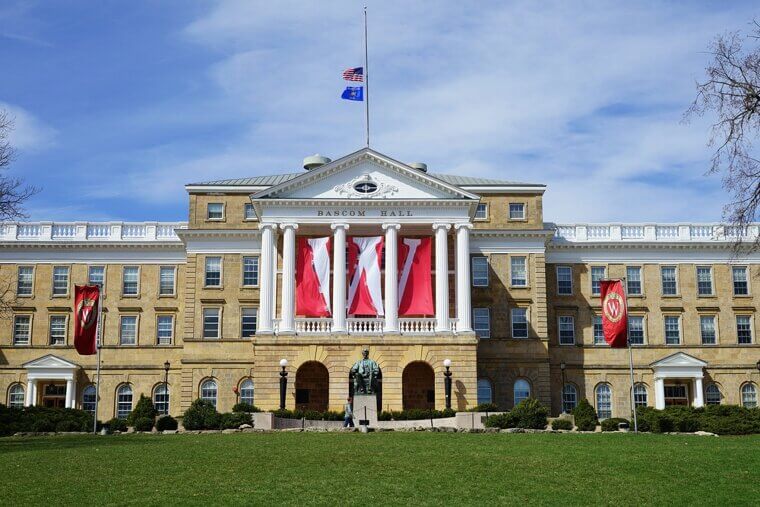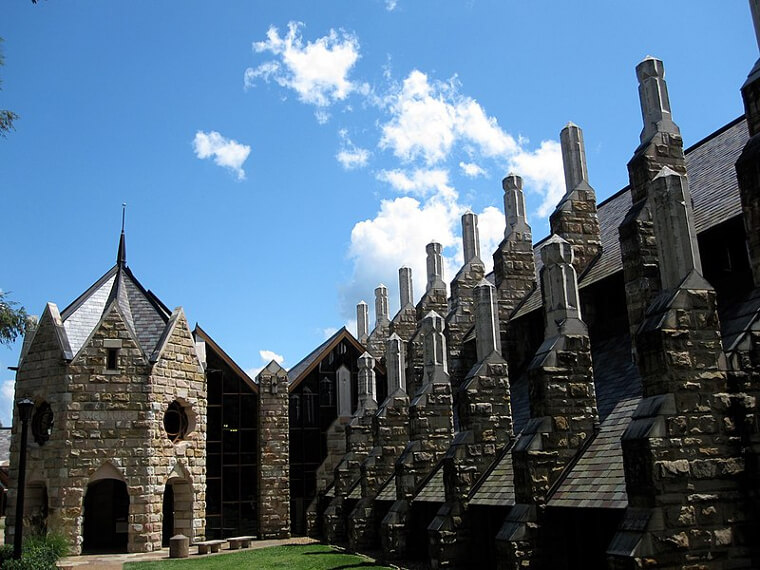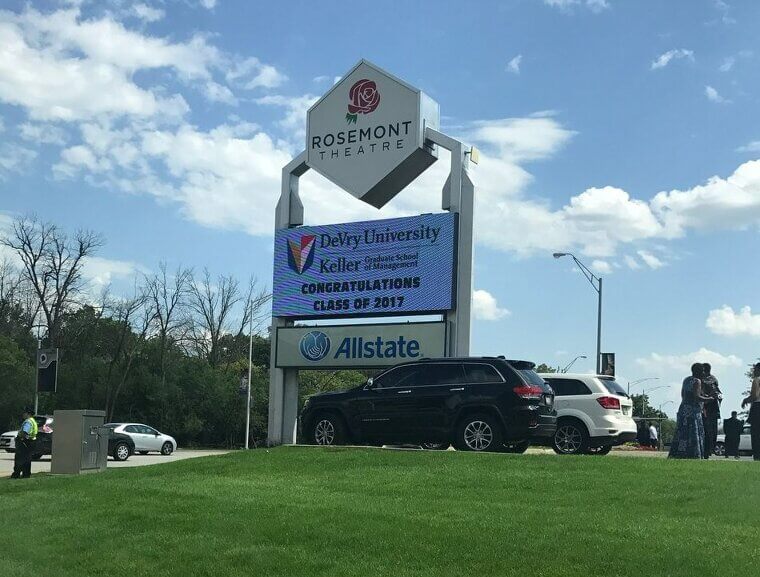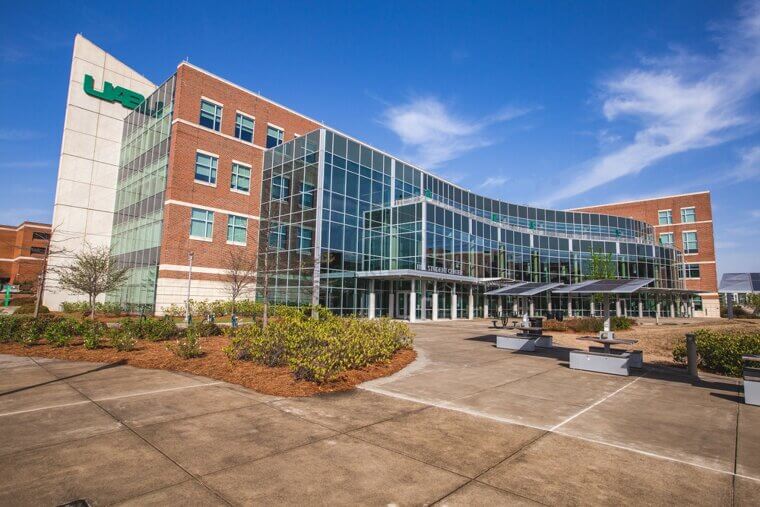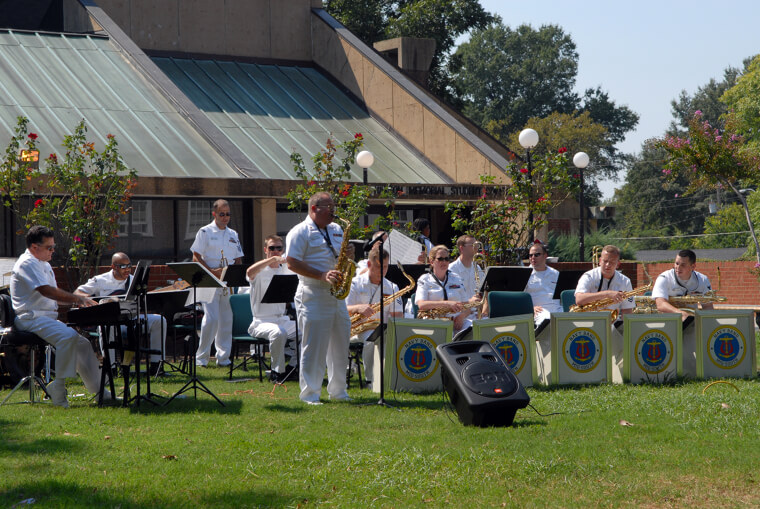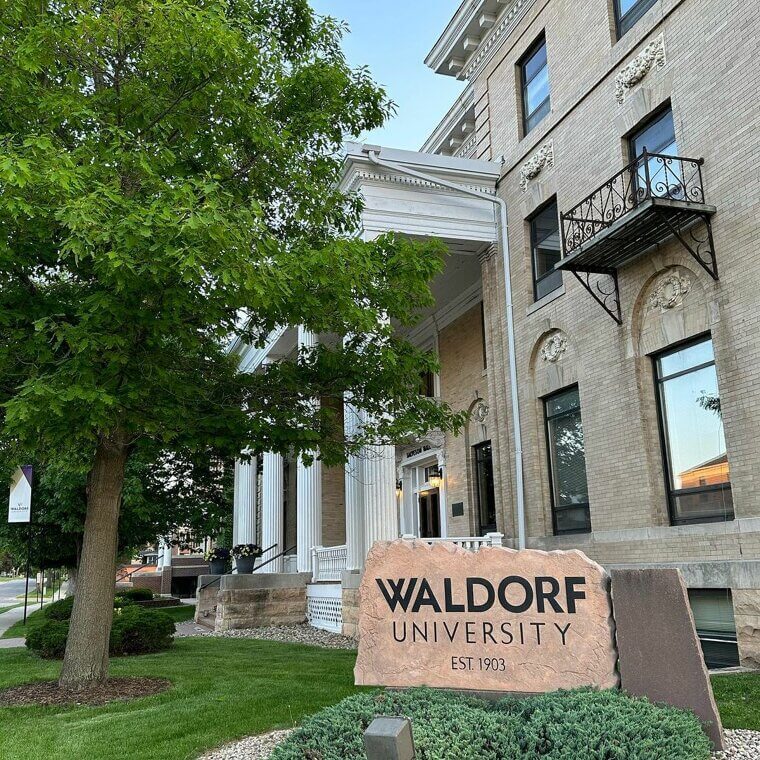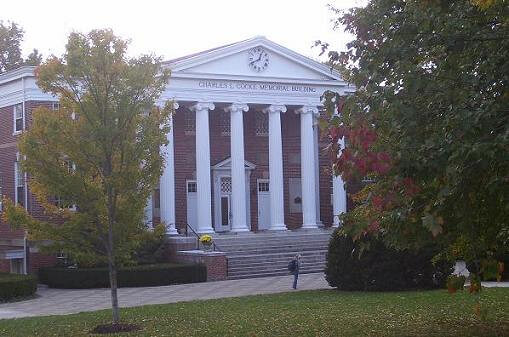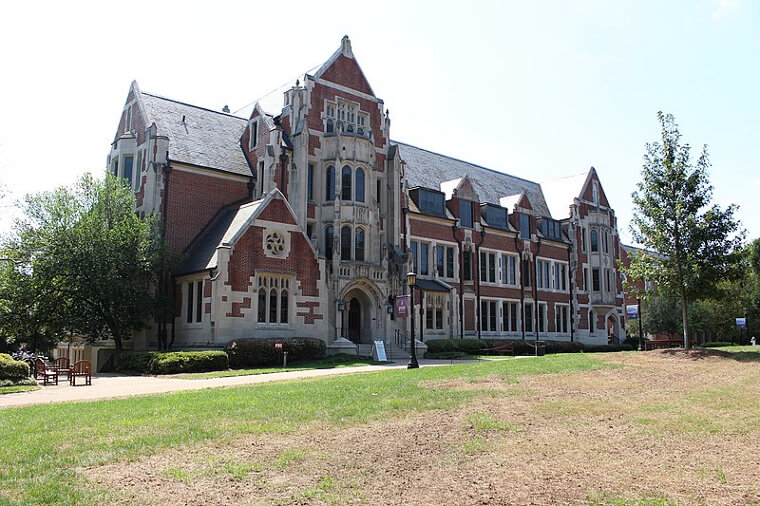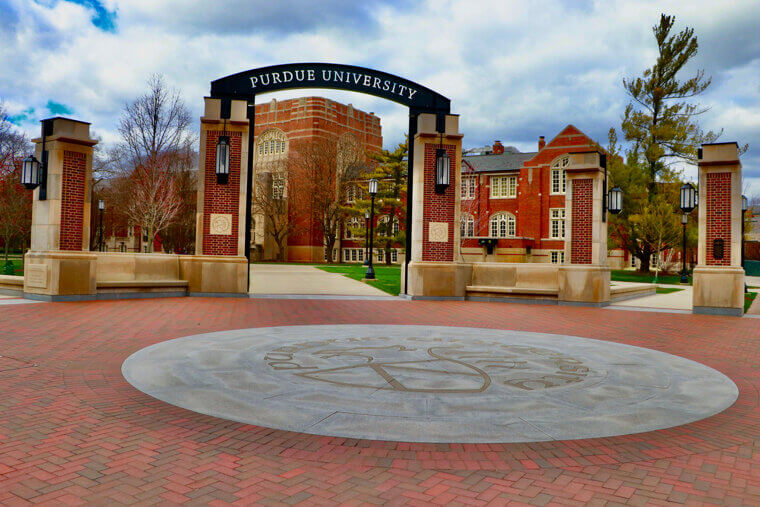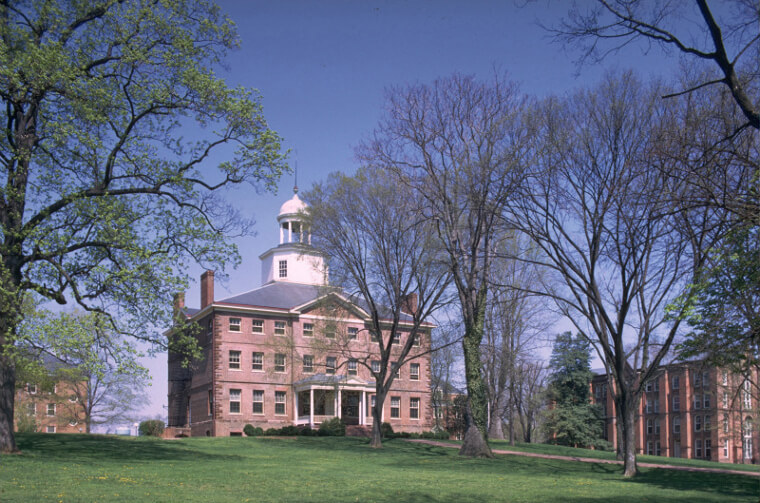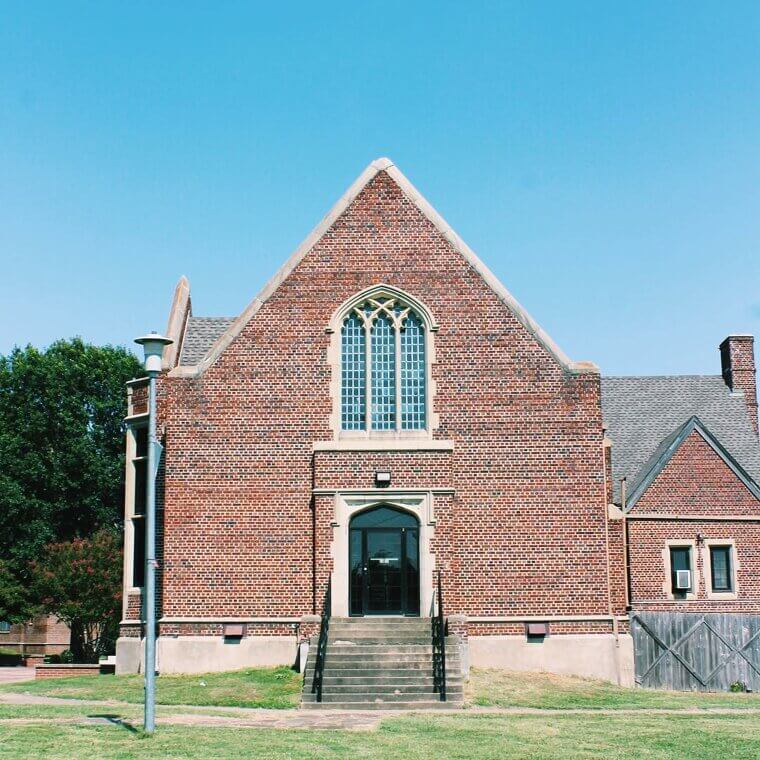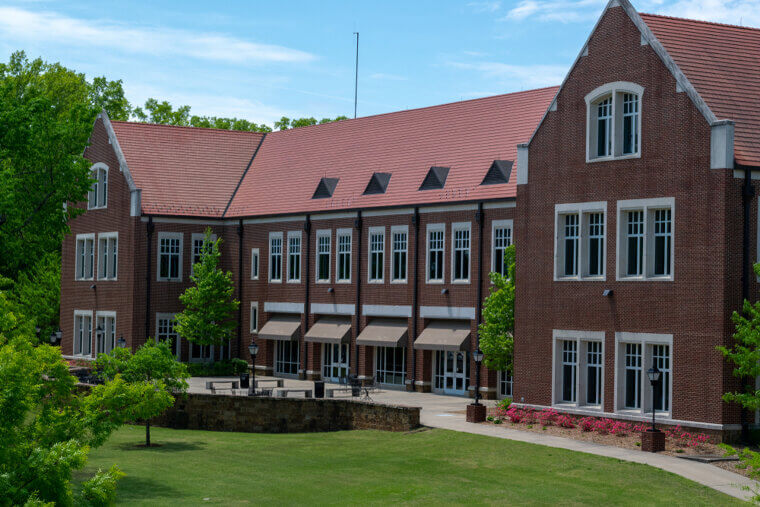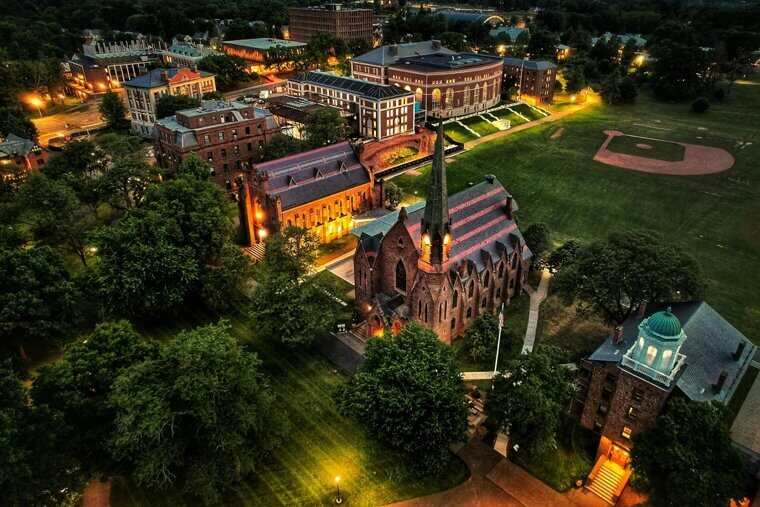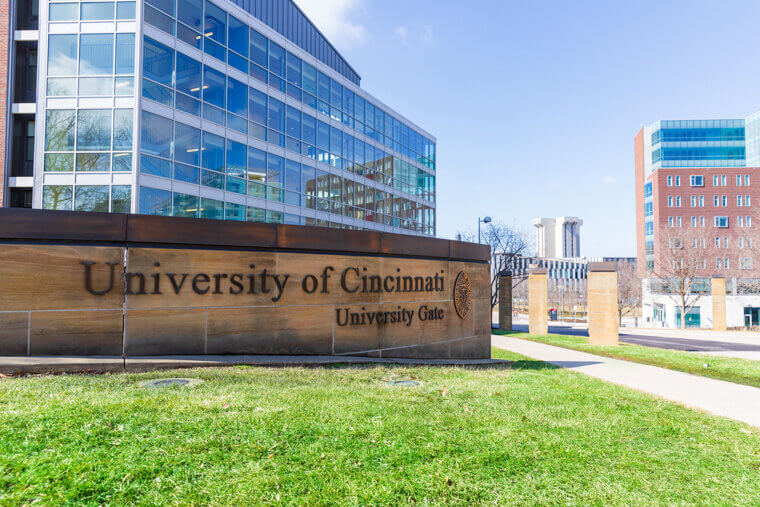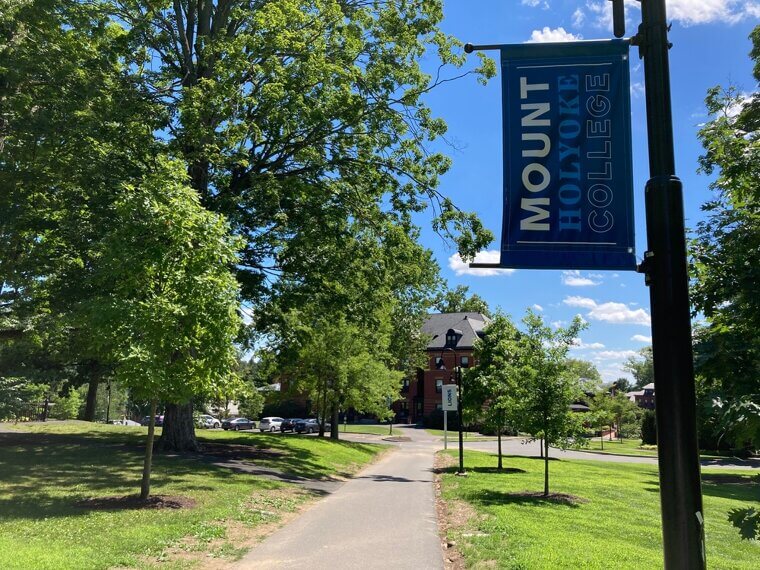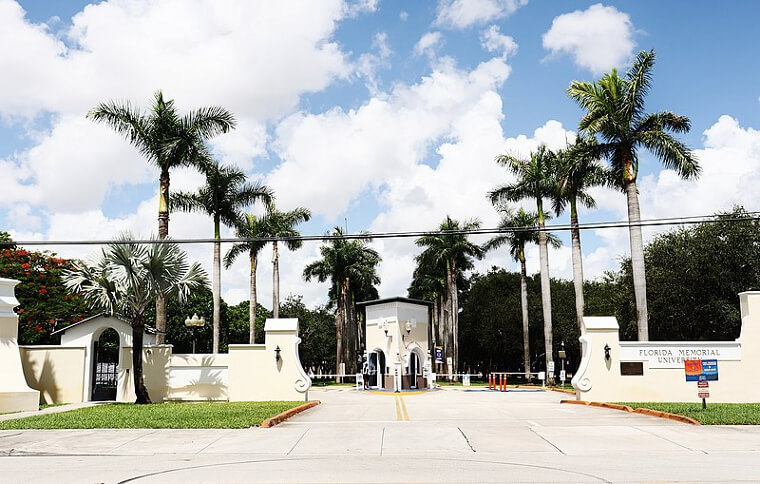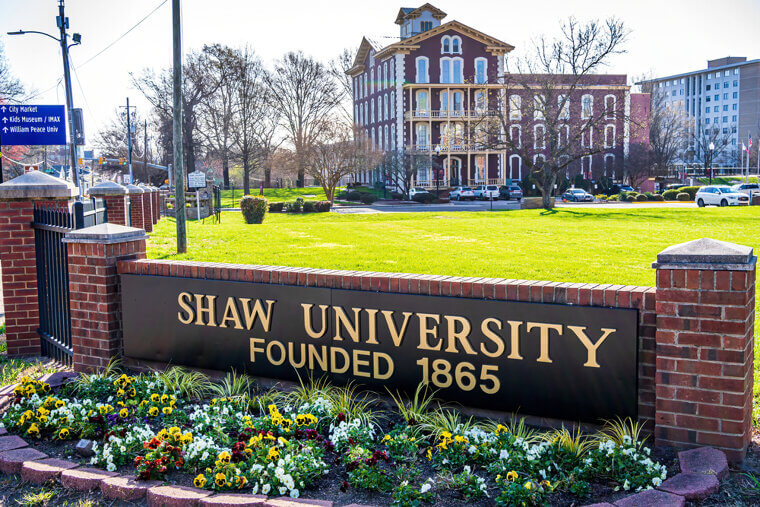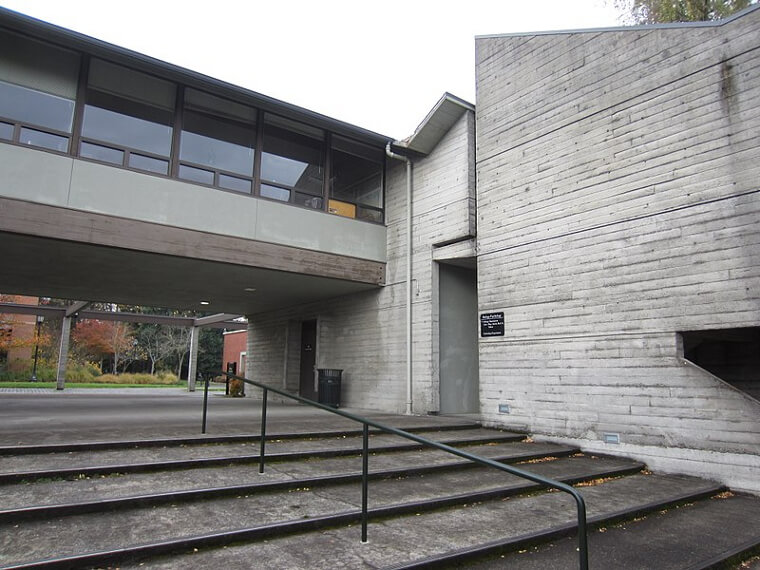40. Johnson State College - Vermont
Many high school students applying to Johnson State College are drawn in by the location. After all, Vermont is known for its rolling hills and outdoor activities - and it's even the largest maple syrup producer in the United States! But did you know that Johnson State College has gone through quite a few changes over the past few years? And it's decision to merge with Lyndon State to become Northern Vermont University in 2018 has not gone down well.
At the time of writing, the acceptance rate is very respectably 95% - but that doesn't mean that everyone graduates. All in all, the graduation rate is just 37%, which is way below average.
39. Lawrence University - Wisconsin
You might be wondering why Lawrence University is on this list. This place has a stellar reputation and an impressive graduation rate of 80%, after all. But while this is considered to be one of the best colleges in the USA in terms of education and schooling, it's safe to say that it's not cheap. Students can expect to pay over $47,000 a year in fees - and that's before you think about living costs.
To make matters worse, the average Lawrence University graduate only earns around $44,000 every year after they graduate. So, you'll likely spend a long time paying off those student loans.
38. Plymouth State University - New Hampshire
New Hampshire is a popular location for students. Overall, there are 12 public schools and six private schools to choose from - and it's not hard to understand why Plymouth State University would suck in students. It's in a stunning location and has great statistics to its name, and its reputation has always been pretty impressive. However, that all changed a few years ago when the school found itself caught up in a legal scandal.
When a Plymouth State University student was tried in court for some very serious charges, it was later discovered that a professor had assisted the student in court. They were fired, and another reprimanded for helping out in a smaller capacity.
37. Rhode Island College - Rhode Island
Rhode Island is a popular vacation spot for many, but it's not where most people would choose to send their kids off to college. Despite this, Rhode Island College is still full of students every single year - and it seems as though they understand that their location sets them back. After all, everyone knows that living in New England isn't cheap, and Rhode Island College graduates only make $37,000 a year on average after graduation.
Although they've tried to lower their fees to help out their students, most Rhode Island College graduates walk away with around $26,000 in debt. And this can put anyone off.
36. Fountainhead College of Technology - Tennessee
Many private schools thrive in the USA, but others don't quite make it. This was the case for the Fountainhead College of Technology, which closed its doors for the last time in 2018. Although it had been teaching students for over 250 years, it was struggling to find the balance between teaching students and being a profitable business in the USA. In the end, they just couldn't make it work.
All in all, the fees were too high for students to afford. This meant that student numbers were low, and they weren't quite meeting their quotas. So, they had no option but to shut up shop.
35. Hartwick College - New York
Many students love the idea of attending college in New York, but it's fair to say that Hartwick College is (quite literally) miles away from the Big Apple. Located in Oneonta, Hartwick College is a four-year public college that sounds enticing but may be more trouble than it's worth for students. That's because a year's worth of tuition will set the average student back a whopping $48,120 - which is super expensive.
To make matters even worse, only 58% of students actually graduate after spending that money. Then, when they finally get a job, they're only expected to earn around $48,500 a year - only a tiny bit more than their debts.
34. Texas College - Texas
You probably don't need us to tell you that there are so many amazing colleges in Texas. As the biggest state in the USA, it's brimming with schooling opportunities - which makes it a very competitive landscape. Sadly, Texas College just doesn't seem to be able to compete with the big dogs. For starters, the graduation rate is just 12%, which is way below average and a major turn-off for high school students.
And while the $21,000 school fees could be worse, the average salary after graduation for Texas College students is just $23,000. Because of this, most prospective students don't think it's worth it.
33. Everglades University - Florida
Every high school student has dreamt of going to school in Florida, right? From the hot and sunny weather to the close proximity to the beaches and theme parks, it seems like it will be a whole load of fun. But from an academic and financial point of view, Everglades University has its downsides. Past students have even called out the school for its extortionate fees and the local living costs.
Apparently, many students regret their choice to attend this college when they realize how little money they're left with at the end of the month. And they're crippled with debt by the end of their course.
32. University of Montevallo - Alabama
Public schools tend to be much cheaper than private schools, but that doesn't make them any more affordable to the average Joe. It's highly likely that students will need to take out high-interest loans to afford their courses and work multiple jobs to buy groceries and pay rent, and some wonder whether it's worth it for a place at the University of Montevallo. After all, they only have a 47% graduation rate.
And while the median salary of a University of Montevallo graduate is a little over $38,000, they'll likely walk away with debts of around $26,000. So, they'll be constantly chasing their tails.
31. Middlebury College - Vermont
Sometimes, a college can come under national fire due to one incident, and that's exactly what happened in 2017 at Middlebury College in Vermont. Although the public school has been praised for its teaching and its graduation rate over the years, it's also been criticized for the way it handles situations. And when a visit from a controversial political scientist caused a stir back in 2017, violence erupted and one faculty member was injured.
The whole situation sparked a debate on free speech and discrimination and made headlines across the USA. Because of this, many high school students were put off from applying to the college.
30. Ultimate Medical Academy - Florida + Online
If you haven't heard of the Ultimate Medical Academy, we wouldn't be surprised. This private school is run by ex-Trump University employees and offers mostly online classes. However, it also offers in-person classes in and around Florida for those who would prefer to speak to their professors face-to-face. But while you might be inclined to check out this private college and apply for next semester, you might want to do a little bit of research first.
It's alleged that the Ultimate Medical Academy is just an extension of the now-defunct Trump University and that it is used as an excuse to claim federal student aid. So, it doesn't have a great reputation.
29. Jackson State University - Mississppi
Jackson State University is pretty famous - and in 2023, rapper P Diiy even gifted the athletics department a whopping $1 million in funding. However, it's also pretty infamous, with the public college making its way into the news due to its students and faculty members. Many of its staff have received votes of 'No Confidence' from the board, and the safety of the students have come under question on multiple occasions.
As if that wasn't enough, over half of the students who attend Jackson State University aren't able to graduate, as the graduation rate is just 43%. So, many high school students choose to go elsewhere.
28. Wheelock College - Massachusetts
Many public colleges around the United States are famous for specific programs, from law to healthcare and even science. Wheelock College is specifically famous for its educational programs, and many budding teachers head to Massachusetts in an effort to bag a degree and start their careers in the educational system. However, you do have to wonder whether it's really worth it as teacher salaries are so low and college fees are so high.
In fact, students will likely leave this college with debts of over $20,000 - and it'll be a long time before these teachers are able to pay them off. Especially with added interest.
27. Laramie County Community College - Wyoming
It's fair to say that community colleges have a bad reputation. But when you think about it, they still offer the same courses and the same degrees - just at a very discounted rate. This is the case for the Laramie County Community College in Wyoming, which charges students just $3,306 per year to attend. However, you're not guaranteed a degree at the end of your community college days at all.
At the Laramie County Community College, the graduation rate is just 25%. Of course, this might have something to do with the students rather than the teachers, but that percentage is still extremely low.
26. Marquette University - Wisconsin
When choosing their college, many high school students base their decision on graduation rates, school fees, and the general reputation. But safety should also be considered, as some colleges are much more dangerous than others. This is the case for Marquette University, which is currently classed as the ninth most dangerous college in the United States. In fact, property crime is particularly rife in Wisconsin, which is something students living off-campus should think about.
To make matters even worse, the tuition for this public college is a whopping $39,000 per year. And while Wisconsin is a lovely place, you have to wonder whether it's worth the risk.
25. University of Wisconsin - Wisconsin
You can tell a lot about a university by the person in charge, and it's fair to say that the leadership at the University of Wisconsin has come under fire over the years. Although Ray Cross was only in charge for five years, the UW President was criticized for failing to produce diversity reports, facing a vote of 'No Confidence' and for reprimanding speakers in a violation of free speech.
Because of this, the reputation of this public college has struggled. Ray Cross has since retired, though, so it's said to be making its way back up the popularity rankings.
24. Sewanee-University of the South - Tennessee
At first glance, Sewanee-University of the South seems like a great option for high school students. Not only is it a world-class liberal arts college, but it's also set in acres of land in rural Tennessee, has a graduation rate of 79%, and is a leading seminary of the Episcopal Church. And if you (or your parents) have spare cash in the bank, it's certainly an impressive option to consider.
If you're running low on funds, however, it's probably not the right option for you. With impressive statistics comes equally as impressive fees, and yearly fees at Sewanee will set you back $54,000.
23. DeVry University - Illinois
Moving away from home and living and studying in a different area can be very daunting for high school students. So, they want to know that they're choosing a college they can count on for support. However, that's one of the reasons why DeVry University in Illinois has such a bad reputation. As many of the classes are online and it's almost impossible to contact faculty staff, it reportedly feels very cold and impersonal.
As if that wasn't enough, most people who graduate come away with a whopping $30,000 worth of student debt - and that's before we mention the abysmal 21% graduation rate.
22. The University of Alabama at Birmingham - Alabama
The University of Alabama at Birmingham is a fairly well-known college in the United States. It's world-renowned for being a competent research university and academic medical center, and its seen many successful alumni walk through its walls. That's not to say that it doesn't have its problems, though. Outside of the university, Birmingham is considered to be extremely unsafe, with some of the biggest property crime rates in the USA.
And while the 55% graduation rate is more impressive than some of the other colleges on this list, it's still a relatively low number for high school students looking for schools.
21. West Virginia State University - West Virginia
West Virginia is a lovely state, and it's no surprise that so many high school students dream of leaving their hometowns and enrolling at West Virginia State University. And with an acceptance rate of 96%, it's highly likely that they'll be accepted! That doesn't mean that they'll graduate, though. The graduation rate at West Virginia State University is just 22%, and those who graduate normally have around $31,000 of debt to show for it.
As if that wasn't enough, the average salary of a West Virginia State University graduate six years after graduation is just $30,000. And that doesn't even cover the student loans.
20. LeMoyne-Owen College - Tennessee
At a glance, the LeMoyne-Owen College in Tennessee looks like a traditional American college. Featuring grand buildings, rolling green lawns, and white columns, it looks like somewhere your parents would approve of. But the statistics about LeMoyne-Owen College aren't exactly something to write home about. For starters, it only has a 20% graduation rate, and the average graduate leaves the school with around $37,000 worth of debt to their names.
While graduating is an impressive achievement, most of the graduates who leave this school only earn an average of $29,000 six years later. And for some high school students, that just doesn't seem worth it.
19. Waldorf University - Iowa
Many rich parents do everything they can to get their kids into a private college, and there was once a time when Waldorf University was a college that every parent wanted their child to attend - especially as it was associated with the Evangelical Lutheran Church. But over the years, the school has struggled with its reputation and its low graduation rate of just 31% and its high school fees.
However, Waldorf University has seen some famous students walk its hallowed halls, and it's particularly famous for its sports programs. In fact, Waldorf is the alma mater of NFL player Ian Beckles.
18. Hollins University - Virginia
Hollins University is a popular choice for those seeking college in Virginia. But it's safe to say that it's only really affordable for those willing to drown themselves in student debt - or those who are willing to live at home and commute to campus to save on costs. That's because school fees will set you back $37,000 a year, and the local area is extremely expensive. In fact, most students spend around $53,000 a year living and studying there.
Of course, the academic options are impressive and worth the money if you can afford it. But if you're tight on cash, it's probably not something you could realistically afford.
17. Agnes Scott College - Georgia
If you're a woman looking for a smaller, more intimate college experience - Agnes Scott College in Atlanta may fit the bill. This private women's liberal arts college only enrols around 1,000 undergraduate and graduate students, which means that every student gets the care and attention that they really need. However, with this extra attention and intimate setting comes higher college fees, and a year at Agnes Scott College will set you back over $41,000.
It'll be a long time before you pay off those loans, too. The average graduate from this private school only earns $39,000 - which doesn't even cover a year of school fees or interest.
16. Macalester College - Minnesota
If you prefer colder climates and will feel most comfortable in a state where cold temperatures and snow are pretty common, Minnesota would be a great choice for you. But according to those who have attended Macalester College in the past, you're better off choosing another college in Minnesota over this one. That's because graduates are constantly complaining about the high fees of this school - and the low median salary they're on now.
With fees of over $54,000 every single year and a median salary of less than $48,000, it just doesn't make a lot of financial sense to attend this particularly American university.
15. Purdue University Global - Indiana
Purdue University Global is unlike many of the other American universities on this list. For starters, it's fully online - and it's campus in Indiana is purely for accreditation purposes. And while this gives students the ability to bag a degree from home and save on extortionate fees, that isn't always a good thing. In fact, Purdue University Global has such a bad reputation that most people would actively encourage you to avoid it.
Even the school seems to know that they're not as good as they should be. Upon registration, you have to sign a waiver to state that you will under no circumstances sue the university.
14. St. John’s College - Maryland
If you live in Maryland and want to choose a local school that will save you money on student accommodation, St. John’s College could be a great choice for you. This private liberal arts college is one of the oldest in America, and some people absolutely love the legacy that comes with it. But you still need to prepare yourself for the higher-than-average school fees that you'll need to pay to study there.
To make matters even worse, most of the graduates who study here only go on to earn a median salary of $33,000 10 years after they've graduated. This is way below average.
13. Bacone College - Oklahoma
As one of the smallest colleges in the USA, Bacone College suits people who want to study under-the-radar - but even the college itself knows that it's not one of the best. Their website says, 'Like many small non-profit colleges, Bacone has experienced several difficult years.' And these difficulties have come from financial struggles and low graduation rates. In fact, only 15% of those who enrol at Bacone College actually graduate.
The small number of people who do graduate don't go on to earn a lot, either. The median salary for Bacone College graduates six years after graduation is just under $35,000 a year.
12. Hendrix College - Arkansas
From an academic point of view, Hendrix College is one of the best liberal arts colleges in the country. But like many of the other private schools on this list, the private nature of the university and the impressive education program means that enrolment doesn't come cheap. On average, a Hendrix College student should expect to pay around $45,690 on school fees - and that's before you take into account the living costs.
Because of this, many students find themselves working two or three jobs at a time to keep them afloat - unless they have parents with deep pockets who can foot the bill.
11. Chaminade University - Hawaii
For many, the idea of studying and living in Hawaii seems like a dream come true. They get amazing weather, a tropical lifestyle, and the chance to study in one of the most stunning locations in the USA. But living in Hawaii comes at a price - not only due to the high living costs of living in Hawaii at the moment, but also because of the high school fees on top.
Unfortunately, those who graduate from Chaminade University don't end up earning a lot, either. The median salary of a graduate is just $39,000, and that's even six years after graduation.
10. Keiser University - Florida
It's easy to get sucked in by the palm trees and the sun in Florida, but high school students should think twice before choosing to go to school in this state. While life in Florida may seem fun, many of the colleges in this state are considered to be some of the worst in the United States - and that's the case for Keiser University in Fort Lauderdale. In fact, it's the 272nd best college in the country.
While tuition is relatively cheaper than some of the other colleges on this list at just $18,000 a year, it's graduation rate and its student satisfaction rate leave a lot to be desired.
9. Wesleyan University - Connecticut
If you want to have the best chance of graduating, Wesleyan University in Connecticut is a top choice. In fact, this school has a 93% graduation rate, which is one of the best in the country. But there's a reason why this private liberal arts university has such a high success rate - and that's because it's a small university with high fees, which means students have no choice but to study hard or be crippled in debt.
To be more specific, a year at Wesleyan University will set you back $55,000. It's also a four-year university, so we'll let you do the math on that one. Hint: it's expensive.
8. Johnson University - Tennessee
While students head off to college to bag themselves a degree, there's no doubt about the fact that they pack up their stuff and leave home to enjoy life's many experiences. College students are notorious for partying into the early hours and spending their free time drinking and hanging out with friends. If that's your plan, you might want to give the quiet Johnson University in Tenessee a wide berth.
This college is located in the quaint Kimberlin Heights, which is home to less than 2,000 people. The locals aren't fans of parties or late-night ragers either, so it'll be a very quiet life.
7. University of Cincinnati - Ohio
As you can probably tell by the name, the University of Cincinnati is located in Cincinnati, Ohio. And while there's no doubt about the fact that its location is a major draw-in for those who don't live in the state, out-of-state students aren't exactly welcomed at this school. They charge out-of-state students a huge percentage more than those from within the state, and you can expect to pay around $27,000 a year.
Not only that, but the University of Cincinnati has also made a name for itself as a dangerous college over the past few years. In fact, it's the 18th most dangerous college in America.
6. Mount Holyoke - Massachusetts
Many young women dream of attending a Seven Sisters college, and Mount Holyoke is the oldest of the lot. This private liberal arts women's college has a rich history attached to it, and some students absolutely love studying there. However, attending this school isn't cheap and will set the average student back a whopping $50,000 every single year. Not only that, but the median salary for graduates is pretty abysmal.
On average, graduates of Mount Holyoke will earn just under $50,000 a year - which doesn't even cover their student loans or the interest thrown on top. So, is it worth it?
5. Florida Memorial University - Florida
At first glance, Florida Memorial University looks absolutely stunning. It's surrounded by palm trees, lagoons, lush green grass, and bright blue skies. And while you'd assume that those who attend this college will love every second and study hard, it seems as though they're too distracted by the nearby beaches of Miami to make it work. As a result, this college only graduates 38% of their students every single year.
The tuition at Florida Memorial University is pretty average at $23,000, but the average salary for graduates definitely isn't average. Instead, it's just $36,500 - which is low for a worker with a college degree.
4. Shaw University - North Carolina
From a historical standpoint, Shaw University is pretty impressive. This private historically black university first opened its doors in 1865 and paved the way for many other historically black universities out there. And while it's still popular with students today, it's fair to say that the current statistics aren't great. In fact, it has a graduation rate of just 25% - which means that 3/4 of students don't bag a degree at the end of their college career.
What's more, those who do end up graduating only wind up on below-average salaries. To be more specific, if you enrol here, you should expect to earn around $29,000 a year.
3. Lewis & Clark College - Oregon
Many parents dream of sending their children to a private school, and the private liberal arts college of Lewis & Clark College in Oregon is the top choice for many. And from one side of the fence, we can understand why. Set primarily in the wilderness, this college merges an outdoorsy life with an impressive education - but there are some downsides. For starters, it's very expensive and will set you back $51,000 a year.
It's also faced some controversy over the years. In 2022, one student died and two students were badly injured when a column on the college campus fell down on them.
2. Mt. Sierra College - California
Have you heard of Mt. Sierra College? We wouldn't be surprised if you had, as this former college is one of the most controversial schools of all time. Things started going downhill for the college back in 2013 when the school was given a warning due to issues surrounding their accreditations. As things got progressively worse, the president of the college decided to close up shop in 2019 - giving their students just one day's notice.
Before this university closed its doors for good, the graduation rate at Mt. Sierra College was just 6.2%. And we're sure that number was a source of embarrassment for many.
1. Colorado College - College
If you want to spend your weekends snowboarding down the mountains or hiking through the wilderness, enroling at Colorado College is definitely something you should consider. It's a good idea to research this university fully, though, as you may find it difficult to get in. That's because Colorado College only accepts 16% of applicants, which has contributed towards their 86% graduation rate. After all, they only want the best of the best.
This comes at a price, though. A year's tuition at this American school will set you back $50,000, but graduates who have been and gone are now now earning a median salary of $38,000.

